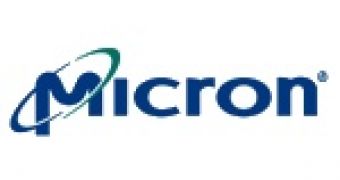Yesterday, Micron, one of the worldwide leading providers of advanced semiconductor solutions, announced its latest e-MMC embedded devices. With 32GB, Micron's latest product, which is fully compliant with MMC standards, provides the highest densities available on today's market.
The company also announced that its brand new e-MMC devices have been build using a 34nm multi-level cell NAND process technology. They feature an extended temperature range, from -40C to +85C, for automotive and industrial applications. The company's e-MMC product offerings will provide consumers with a significant increase in storage capacity for songs, pictures and video, while enabling advanced NAND management features for application designers, to simplify product designs and speed time-to-market.
"Ultimately, because Micron manufactures NAND, we are able to capitalize on our outstanding process technology, well-established IP, and a deep commitment to forwarding NAND memory to bring products like this to market. In fact, we also have the capability to pair e-MMC devices with low-power DRAM in Multi-Chip Packages (MCPs). Ultimately, our recent move to the 34nm process was a major accomplishment and these product lines directly benefit from that innovation," said Graham Robinson, Director of Segment Marketing for Micron?s memory group.
The company announcement also underscored that, thanks to the implementation of the JEDEC-standard, there was no longer a need for host software to accommodate process node migrations. Furthermore, Micron greatly simplified its e-MMC system design by removing the requirements of the host memory controller to support NAND software drivers and complex NAND management techniques, including error correction code (ECC), wear leveling, and bad block management.
The offerings span from 1GB to 32GB devices and combine high-quality MLC NAND Flash memory with a high-speed MMC (MultiMediaCard) controller in a low-profile BGA package. Costumer samples are expected to become available later in August, while mass production will most likely begin later this year.

 14 DAY TRIAL //
14 DAY TRIAL //